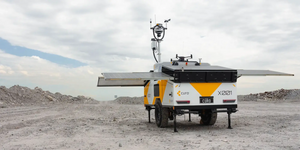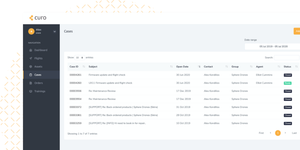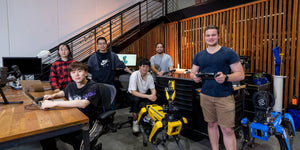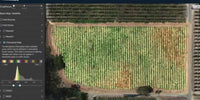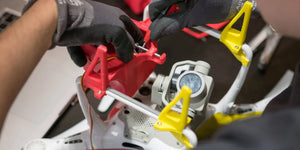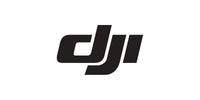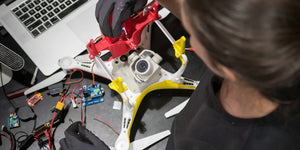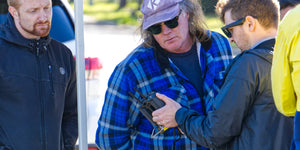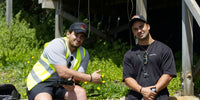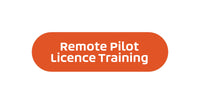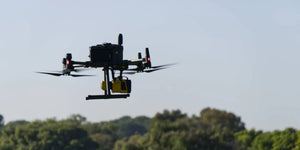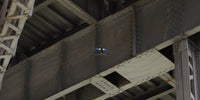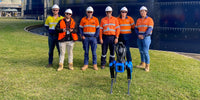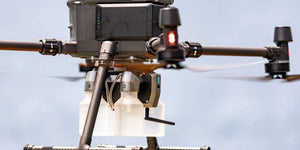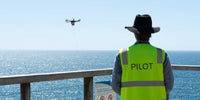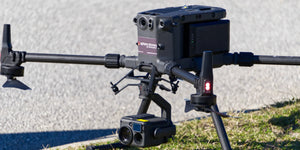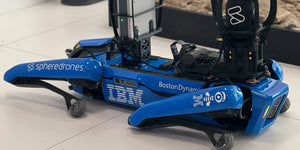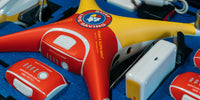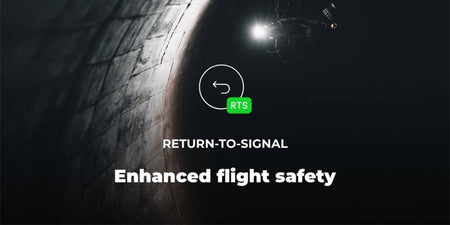The Flyability Elios 2 is an inspection powerhouse when it comes to tight spaces and hard-to-reach places. Its protective cage and powerful lighting system allow it to explore the most dangerous and low-light locations, removing people from the equation.
Let’s take a look at how the Flyability Elios 2 completes an inspection compared to the more common manual methods still used today.
Chimneys and smokestacks
The old way
When it comes time for a routine inspection, chimneys and smokestacks require a fair amount of manual labour. The first method is to send someone into the stack to inspect it visually, requiring multiple team members to ensure the inspector’s safety, and personal protective equipment (PPE) is needed to keep dangerous particles out of the airways. The second way to do it is to send workers up above the stack and look down into it. The big issue with this is that missing a defect or problem is much easier to do as you can’t get a close-up look.
The main takeaways include increased danger, higher costs, and lower reliability.
The Elios way
The Elios 2 completely changes the way chimneys and smokestacks are inspected. No longer do you need a whole team, no longer do you need to enter a stack, and most importantly, it won’t take hours to get it done. Instead, you send the Elios 2 up into the stack or chimney, have it recording with its lighting system on, inspect it on the spot, and then look at it closer after the fact.
The main takeaways include decreased danger, lower costs, higher reliability, and higher efficiency.
Conveyor belts
The old way
Conveyor belts are dangerous areas to have people around for a few reasons, moving parts, possibly hazardous materials, and elevated work platforms at times. Considering all of this, dedicated inspection teams will have one person up on the conveyor belt while the others ensure he’s safe and out of harm’s way.
The main takeaways include heightened danger, longer inspection times, and higher costs.
The Elios way
Using the Flyability Elios 2 to do this is a much better idea. The Elios 2 flies above the conveyor belt, slowly making its way up and checking for any issues. Thanks to the cage, it can essentially roll up the conveyor belt to better look at anything of interest. Once again, the footage captured can be inspected after the fact to ensure nothing was missed.
The main takeaways include decreased danger levels, quick inspection times, and decreased costs.
Vessels and silos
The old way
Inspecting vessels and silos are no joke. A team member is often required to enter the silo and visually inspect it to undertake an inspection. This requires specialist equipment to ensure the person doesn’t sink into the contents or the whole thing being emptied. Both add extra costs. At least one other person also watches over the person in the silo or vessel to ensure they can be saved if something goes wrong. Not to mention the risk of working at potentially lethal heights.
The main takeaways include high safety risk, higher costs, and decreased efficiency.
The Elios way
Using the Elios 2 is the perfect alternative to manual inspections. The Elios 2’s protective cage allows it to land in the vessel or silo and even hit the walls without causing any damage to itself. Using the drone also means no one has to enter the silo with potentially harmful materials inside of it. The Elios 2 is also small enough to be attached to a belt or harness, leaving both hands free to climb to an access hatch.
The main takeaways include lower risk, lower costs, and improved efficiency.
Structure inspections
The old way
Structure inspections are dangerous for several reasons, the elevated working heights, the material or chemicals being stored inside, and particles in the air that can cause harm. As a result, all work will usually be stopped to ensure the inspection can be completed safely. Personal protective equipment (PPE) is also required to prevent dangerous chemicals or dust from getting into the workers’ lungs. An elevated platform like a cherry picker is also a must to get to the higher inspection points.
The main takeaways include increased risk, extra costs, and a shutdown of the structure.
The Elios way
The Elios 2 removes the need for everything mentioned above. To complete a structure inspection with a Flyability Elios 2 only requires two people, a pilot, and a lookout. The protective cage allows it to get right into a small area without becoming damaged. It can also get into spaces too small for people to inspect. Most importantly, no one has to make their way up to do an inspection or enter the potentially dangerous environment.
The main takeaways include decreased risk, lowered costs, and an operational work environment.
